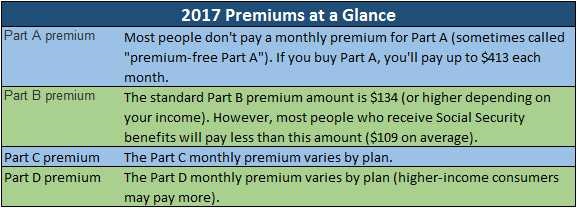The United States has a long history of working to secure national healthcare coverage for seniors. In 1945, President Truman along with Senator Robert Wagner, James Murray, and John Dingell attempted to enact a bill (W-M-D Bill) through congress, however Congress failed to pass it. President Kennedy also failed to pass a bill in 1962. It wasn’t until 1965, under President Lyndon B. Johnson, that a Medicare bill was passed, thereby enabling seniors to receive medical benefits. Today, there are 55 million people benefiting from the program.
There are four parts to Medicare: Hospital (Part A), Medical Insurance (Part B), Medicare Advantage (Part C), and Prescription Drug Coverage (Part D). It is important to understand the basic Medicare coverage prior to enrolling for benefits.
Medicare Part A (Hospital) and Medicare Part B (Medical Insurance)
Medicare Part A helps pay for necessary medical care and services provided by Medicare-certified hospitals, skilled nursing care (limited basis), home health care, hospice care, and other services.
 Medicare Part B pays for 80% of approved charges for most covered services. Covered services not only include lab tests, surgeries, ambulatory transportation, and doctor visits, but also provides for medical supplies such as wheel chairs and walkers. These items are considered medically necessary to treat a disease or condition. Part B does NOT usually cover charges for routine physical examinations or services which are not due to illness or to treat an injury.
Medicare Part B pays for 80% of approved charges for most covered services. Covered services not only include lab tests, surgeries, ambulatory transportation, and doctor visits, but also provides for medical supplies such as wheel chairs and walkers. These items are considered medically necessary to treat a disease or condition. Part B does NOT usually cover charges for routine physical examinations or services which are not due to illness or to treat an injury.
Medicare Part C (Advantage Plans)
Advantage plans are offered by private insurance companies approved by Medicare. Under these plans, you’ll receive Part A and Part B from a private insurance company. However, hospice coverage is not provided. Hospice is still covered in “Original” Medicare. In addition to the standard Medicare services, these plans may have extra coverage such as emergency and urgent care. Advantage plans also offer extra coverage such as vision, hearing, dental, and health and wellness.
Medicare Part D (Prescription Drug Coverage)
Medicare offers Prescription Drug Plan (PDPs) coverage for everyone with Medicare. These plans are run by private companies and insurance companies. Each Medicare PDP has its own list of covered drugs (called formulary) so your medication may be covered under one provider but not another. There are many different providers so it is important to research which provider will supply your required medication.
How to Enroll
Individuals are eligible for Medicare benefits on their 65th birthday. Enrolling is very simple for people who are already receiving social security prior to age 65, as you are automatically enrolled into Part A and B. You’ll receive a red, white, and blue Medicare card in the mail three months prior to your 65th birthday. Don’t forget to sign up for Part C and/or D as the programs become more expensive if you delay. Those not receiving Social Security at age 65 will have to enroll during the Initial Enrollment Period beginning three months before your birthday and ending three months afterward. If you do not enroll at that time, you will not be eligible until the following year.


